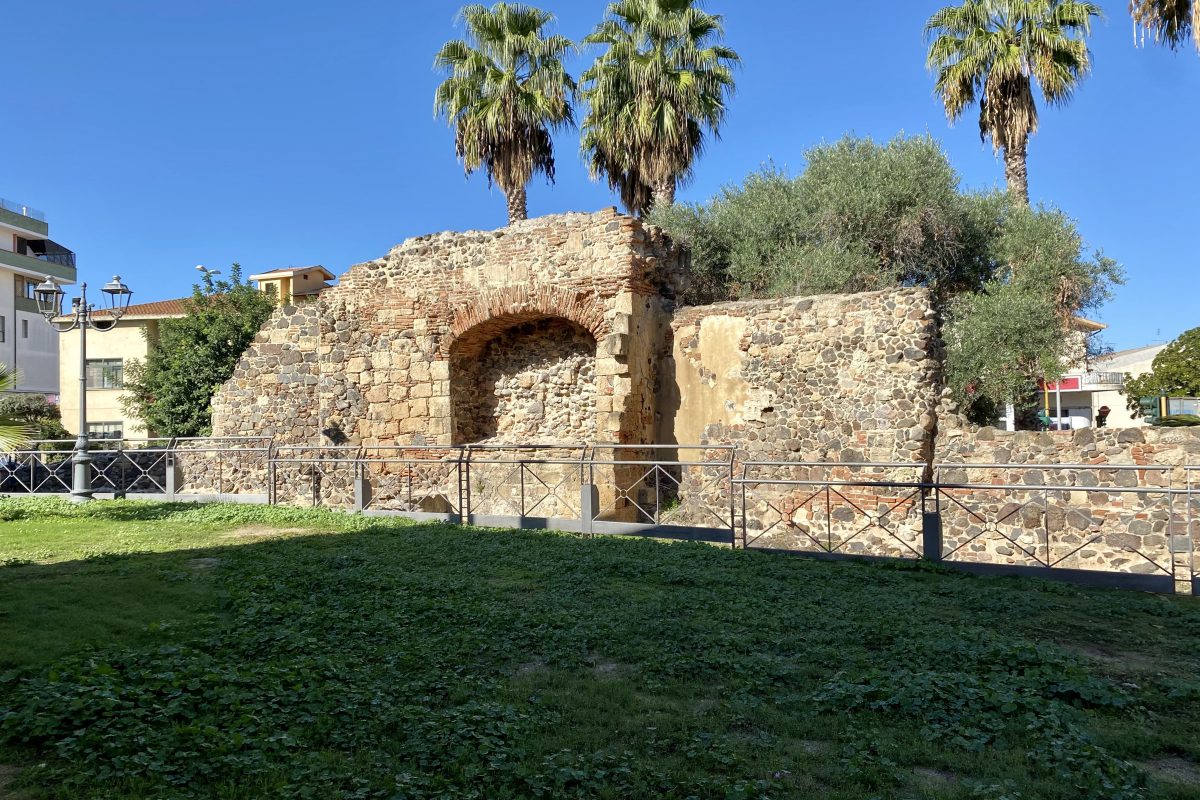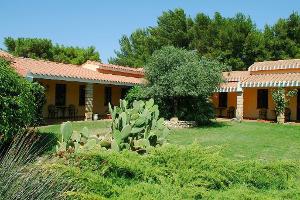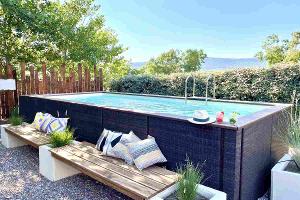Oristano, with its 30,000 inhabitants, is located relatively centrally on the west coast of Sardinia and has a pretty town center that is inviting for a stroll. The city is located in the fertile Campidano plain, which is considered the agricultural center of Sardinia thanks to the Tirso River, which flows into the sea here.
Oristano, also known as Maristanis or Aristanis in Sardinian, has a long and eventful history: as the successor to the ancient seaside city of Tharros, which was an important Phoenician trading center from the 9th century onwards, Oristano finally became the capital of the judicate of Arborea in 1070 . This controlled half of Sardinia for a good 300 years, and Oristano accordingly became an important cultural and commercial center on the island. This influence waned from 1409 and ended in 1478 when Sardinia was conquered by the Spanish.
Oristano is a relatively unknown holiday destination in Sardinia, although it is close to the sea and the most beautiful beaches in the area and offers many varied archaeological sights and museums. At the same time, it is strategically located to all ferry and airports on the island, meaning it can be reached by car in 1 to 2 hours.
Giants from Mont’e Prama in the museum in Cabras

Less than ten minutes by car from Oristano is Cabras, near which the Mont’e Prama necropolis and, among other things, around 5,000 fragments of the imposing giants of Mont’e Prama were discovered. These are now partially reassembled sandstone sculptures up to 2.5 m high from the prehistoric Nuragic period, depicting skilled and courageous young men. Six of the restored statues can now be admired in the Archaeological Museum of Cabras: three boxers, two archers and a warrior. The boxers are the most popular statues among museum visitors: they are depicted with a bare torso and protect themselves with a shield that they hold over their head with their left hand. The archers, on the other hand, wear a tunic, a protection on the chest and a helmet on the head, with the left arm holding the bow while the right is stretched forward. The warriors, like the archers, wear a short tunic and a horned helmet, but have a circular shield attached to their forearm with which they protect themselves.
Studies on the origin and history of the Mont’e Prama necropolis are still ongoing. However, it is currently believed that the necropolis may have been the burial place of an important family that held a dominant position in the Nuragic civilization of the Early Iron Age.
The ancient city of Tharros
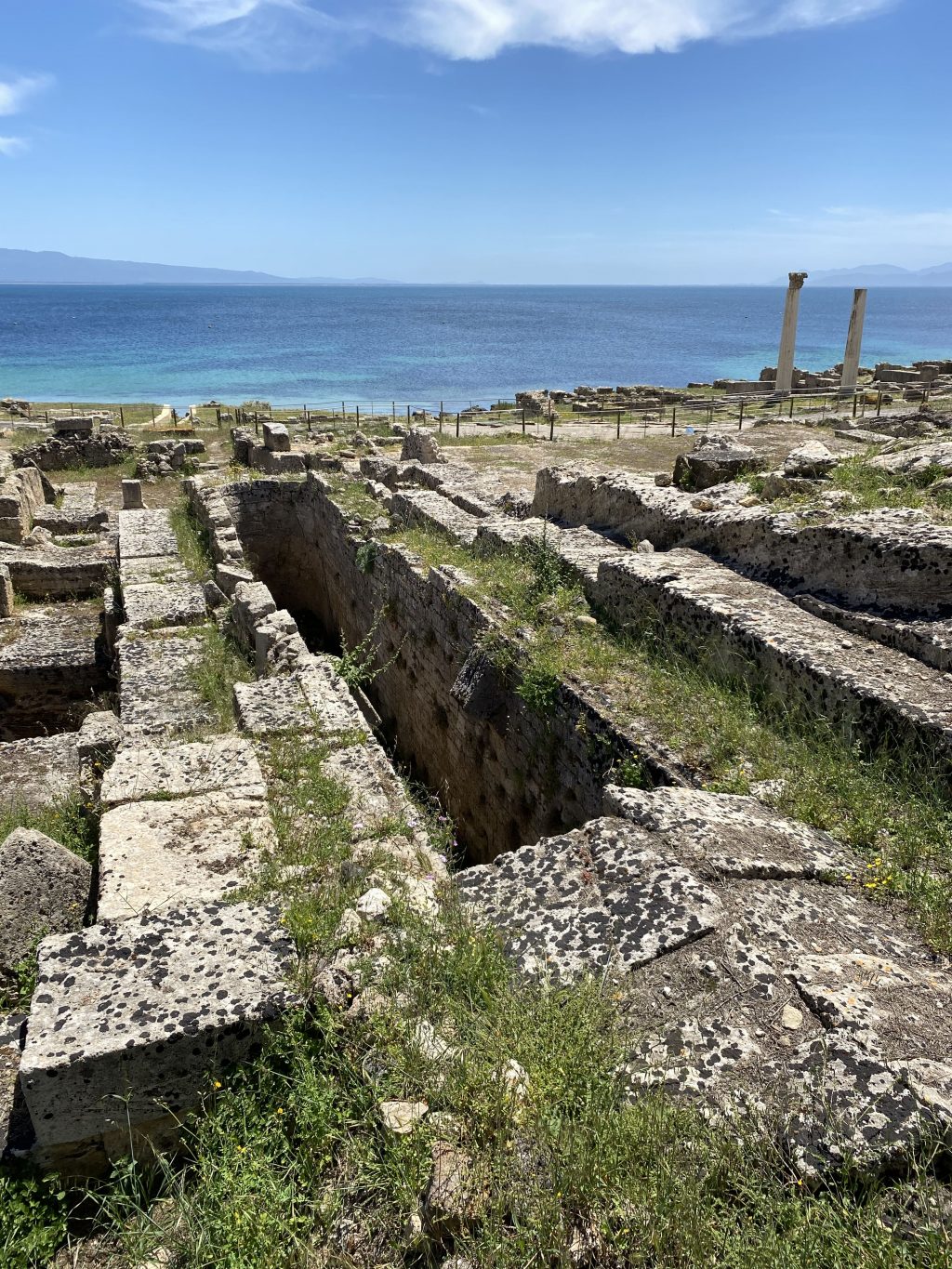
Tharros has always been considered a crossroads of cultures and peoples who met here for business and trade thanks to its strategic position right on the sea. Tharros is located near San Giovanni di Sinis near the isthmus of Capo San Marco and was founded in the 8th century BC by Phoenicians who settled in this area. Tharros was already inhabited in the Nuraghic period, as shown by the remains of Su Murru Mannu, a prehistoric Bronze Age village, and the Nuraghe ruins near the Spanish Tower of San Giovanni and Capo San Marco. After the Phoenicians, the city was taken over by the Punians and then by the Romans.
When visiting the ruins of Tharros, you will discover Phoenician cult sites called tophets and chamber tombs typical of the Carthaginian civilization. The symbols of Tharros are certainly the two (reconstructed) white columns of the Tetrastyle temple, which rise high into the blue sky. Finally, the three spa complexes near the sea bear witness to the great splendor of the Roman population that settled in this area after the first Punic War. Due to ongoing pirate attacks, the city was eventually completely abandoned, and nearby Oristano now became the capital of the Judicate.
The archaeological finds from Tharros are now exhibited in three museums: the Giovanni Marongiu Museum in Cabras, the Antiquarium Arborense in Oristano and even the British Museum in London has some pieces of Punic origin, including gold and silver jewelry, scarabs and pottery.
What to see in Oristano
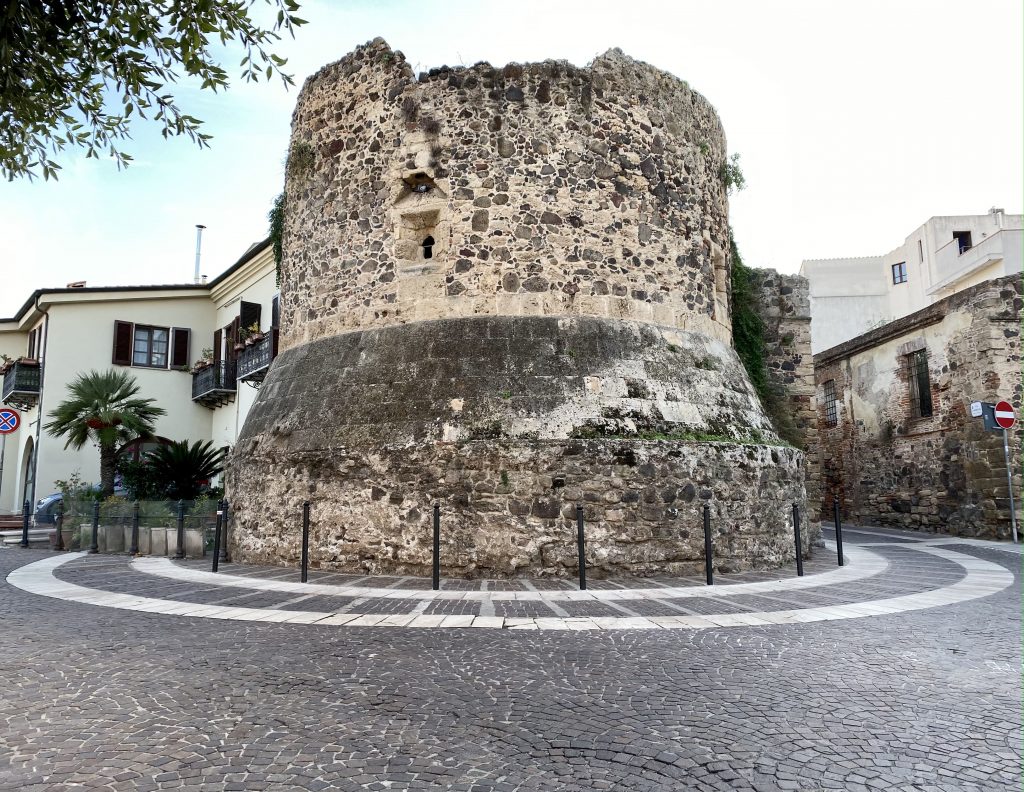
A walk through Oristano can only begin in the lively Piazza Roma with the famous Mariano Tower from the Judicate period in its center. Other traces from this period include the Portixedda Tower, which was another entrance of the city, and the remains of the medieval walls.
The most important religious building in the city of Oristano is the Cathedral of Santa Maria Assunta, mother church of the Archdiocese of Arborense. The building has been restored several times over the centuries and today combines a variety of styles from European art history.
Another notable church is the Chiesa del Carmine, which was built in 1785 in the Rococo style and is considered one of the most important representatives in Sardinia. The adjacent Carmelite monastery is also noteworthy.
The already mentioned Antiquarium Arborense Museum, the Carlo Contini Art Gallery and the Diocese Museum are definitely worth a visit. The Antiquarium Arborense is the most important museum in Oristano and exhibits, among other things, archaeological finds from the entire region, including finds from Tharros. The Carlo Contini Art Gallery, housed in the ancient Hospitalis Sancti Antoni, houses a permanent collection of important Sardinian artists such as Carlo Contini, Maria Lai and Giuseppe Biasi, but also hosts interesting temporary exhibitions. Finally, the Diocesan Museum displays the priceless treasures of the Archdiocese of Arborense, including some archaeological finds and an important numismatic collection.
Tips for staying overnight
No matter whether you are vacationing in the north, the east or the south, a day visit to Oristano is definitely worth it if you want to know a little more about the prehistoric history of Sardinia. And if you want to stay here longer, you should definitely visit the varied beaches in the surrounding area.
You can also go cycling in and around Oristano and Cabras, as this fertile ebb is relatively flat. Some accommodations in the region also offer bicycle rental and information about the most beautiful tours.
 it
it de
de nl
nl en
en fr
fr
